
Sustainable trade marks: the rise in green filings
The current climate crisis and other environmental issues have spurred businesses on to consider their approach to sustainability. Consumers appear to be moving towards sustainable trade marks. These are brands that can evidence that they are taking steps to tackle climate change by improving their business model to be more sustainable, or towards those that are developing new products, and innovating generally, to address future needs and trends.
Furthermore, in view of the cost of living crisis, businesses are innovating and developing products that address the need to use less energy, save costs for consumers, and are good for the planet.
As a result, we are seeing companies investing significant efforts in protecting their new brand names and identities. This had led to a significant increase in “green” trade mark filings, i.e. brand names that are filed as trade marks and contain at least one ‘green’ term in their specification of goods and/or services.
A ‘green’ term is a term in the specification of goods/services that relates to the protection of the environment and/or sustainability in some way. These include products or services that reference ‘Wind energy’, ‘Reuse’, ‘Energy Conservation’, ‘Energy-Saving’, ‘Solar Panels’, ‘Electric Cars’, ‘Electric Bikes’, etc.
Green EU trade marks
The graph below reflects the rise in green EU trade marks (‘EUTM’). It demonstrates the increase in applications containing such terms between the years 1996 and 2021.

In 2021, the European Union Intellectual Property Office (‘EUIPO’) published a study examining the large increase of green trade marks being filed (see here). For our BrandWrites article on this study, please see here.
The EUIPO has recently published an update to their green IP study. It demonstrates that the increasing trend of ‘green’ EU trade mark applications continued in 2021. For example, the EUIPO saw approximately 18,726 green EUTMs filed in 2021: an all-time high for the EU registry. This shows an increase in roughly 3,000 EUTMs from 2020. This rise is also reflected in the total share of EUTM filings which increased to 12% for 2021.
Interestingly, when looking into the results even further, the study showed that non-EU countries file a higher proportion of green EUTMs than Member States (14.1% vs 10.6%). This is very interesting, though the rise of Chinese filers is something we are seeing more generally across the board and not just in the field of green trade marks.
| Top Non-EU filers | Top EU filers |
| China | Germany |
| South Korea | Spain |
| Switzerland | France |
| UK | Italy |
| The Netherlands | |
| Poland |
We are also seeing similar trends to the above before the UKIPO. It is important to note the figures highlight the demand for goods and services concerned with environmental protection and sustainability generally.
The results of the 2022 report show energy-related products associated with energy production and conservation account for over 50% of all green EUTMs. ‘Energy conservation’ is the dominant product group making up 34% of green fillings and most likely to be filed by Chinese and German firms. Closely followed by ‘Pollution control’ with 18%. It is also important to flag ‘Solar energy’ totalling 7.4% as the most important category.
These figures are demonstrated in the below graph which shows the breakdown of green EUTMs, filed between 2015 and 2021, by the relevant sector type.
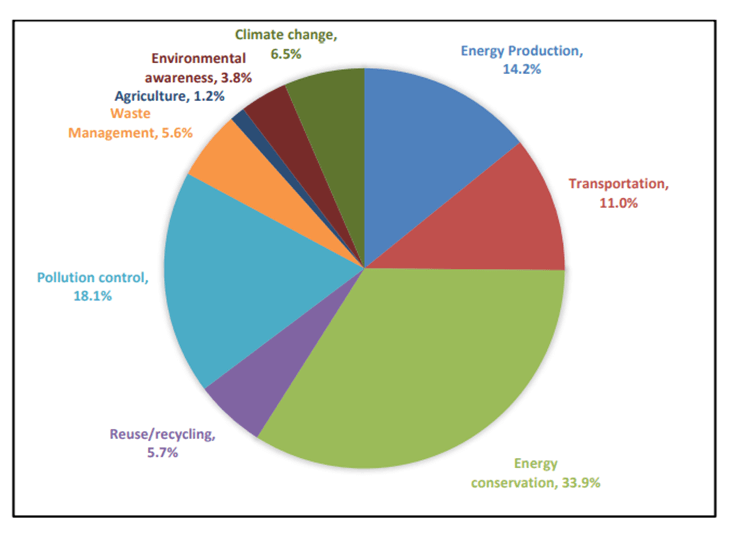
As you can see energy conservation equates for 33.9% of all green EUTMs. Energy conservation is often known as the decision and practice of using less energy. It’s interesting to see that there is a lot of innovation in this sector in particular. That being said, when you dive into the energy conservation figures you see that the majority of trade marks relate to storage of electricity, accounting for 27.7% of those green trade marks, in particular, you see a real growth pattern since 2020; perhaps not surprising when one considers the political and environmental landscape across the EU since that time.
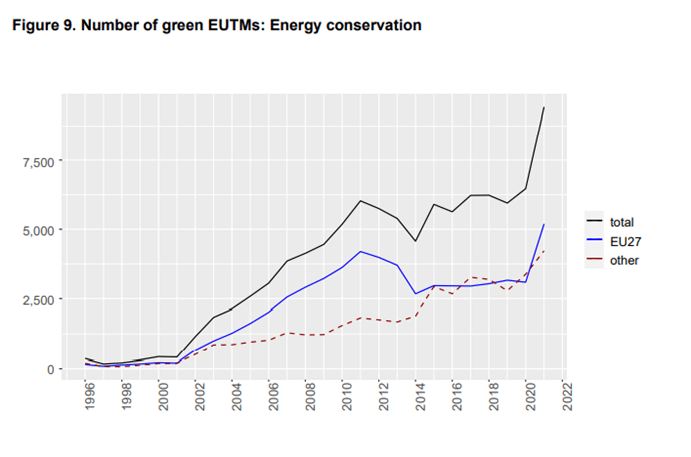
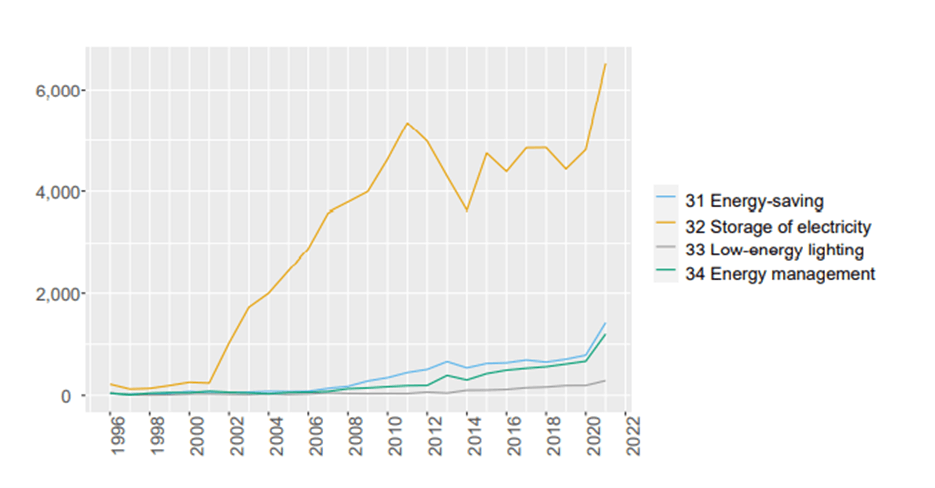
Similar trends follow through into those energy production goods, the growth of which is represented by the below:
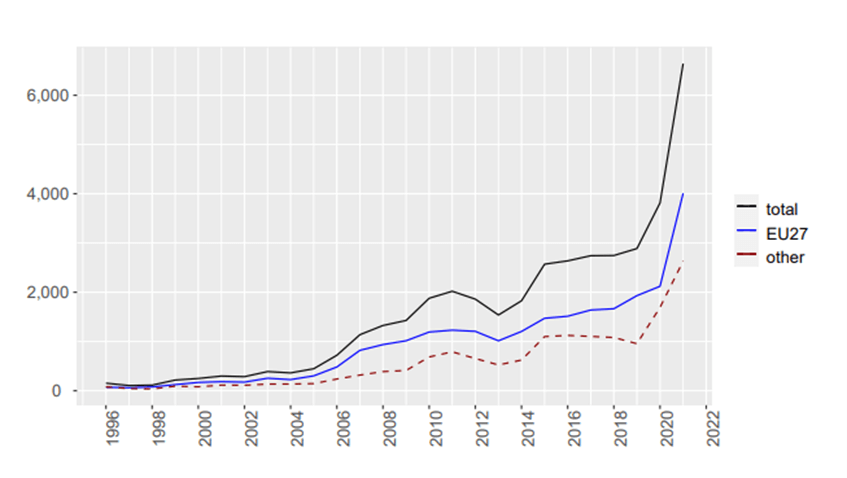

The energy production group only accounts for 14.2% of green EUTMs. However, it is an exciting sector given the overlap with energy storage and transportation. It is refreshing to see real growth in this area, particularly since 2020, and shows a clear push towards solar energy and other types of sustainable energy. Interestingly, there is a decline between the years 2011 and 2014. One can assume relates to a decrease in the prices for CO2 emission allowances.
For transportation, we see growth in electric cars and bikes and all types of hydrogen and electric vehicles, which coincides with an increase in customer confidences in those products.

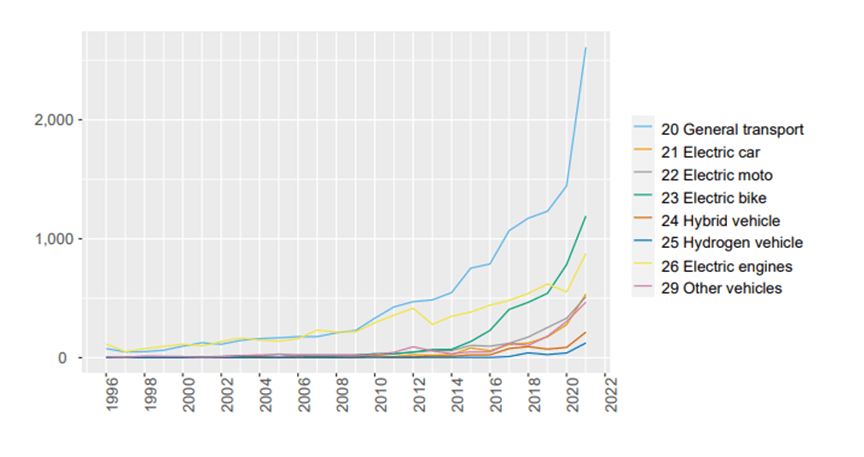
Who is filing?
The sample of data below shows the percentage of green trade marks filed in 2021 by firm size. It clearly demonstrates that it is not just the large multinational-type firms who are filing green trade marks. Their smaller and micro competitors are not too far behind. This data shows the appetite in the market to protect green and sustainable trade marks. The fact that SME and small entities make up such a large proportion of the activity very encouraging.

In conclusion, it is clear that ensuring companies’ have adequate IP protection for their green innovations is increasingly high on the agenda.
If you are a start-up, or an established company, interested in sustainability and green trade mark filings, please do contact us at the details below. We would be delighted to hear from you.
For more information on this matter, visit https://euipo.europa.eu/ohimportal/en/web/guest/-/news/green-eutm-study-1, who we thank for bringing this report to our attention.
For a related Bird & Bird content on Greenwashing take a look at:








